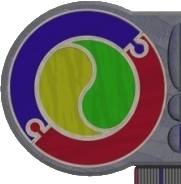 |
|
 |
| |
Computer Systems
eXercise #7
Secondary Storage
- Regarding DOS Disk storage generally:
- Differentiate between a SECTOR and a CLUSTER
- List the components of a DIRECTORY ENTRY
- Describe the processes that LIMIT the rate of data transfer
to/from a disk
- Drescribe how a QUICK FORMAT differs from a complete format
- How are we able to UNDELETE files immediately after we have
DELETED them?
- Regarding FLOPPY DISKS
- What does FORMATTING the disk do to it?
- How can the machine detect whether the disk is BOOTABLE or not
- Suppose you are saving many SMALL (1-2Kb) files onto a floppy.
Under what conditions would the system report DISK FULL when there
was still unused storage space
- Under Apple DOS 3.1, a 5.25" Floppy disk is formatted single sided
with 35 tracks, 16 segments. If each segment contains 256 bytes on
an Apple system then calculate the capacity of the disk
- Suppose a hard disk drive (HDD) is registered in CMOS with the
following characteristics: 619 Cylinders, 64 heads, 63 sectors.
- If each of the sectors can hold 512 bytes, calculate the capacity
of the HDD in Gigabytes
- How many double-sided high density 3.5" floppy disks would it
take to BACK UP this HDD assuming it is possible without storage
space wastage on the floppys, and ZIPPING was NOT USED?
- IF the HDD was ONE partition, what size would the CLUSTERS be?
- Indicate the size of the PARTITIONS if you wanted to ensure
that no cluster exceeded 8Kb
- Regarding Hard Disks Generally:
- What is DEFRAGGING, and why is it important for the 'efficient'
retrieval of information from a HDD?
- Explain how an UNDELETE is possible
- How does a QUICK FORMAT differ from a FULL FORMAT?
|
|
|
 |
|
 |
|


